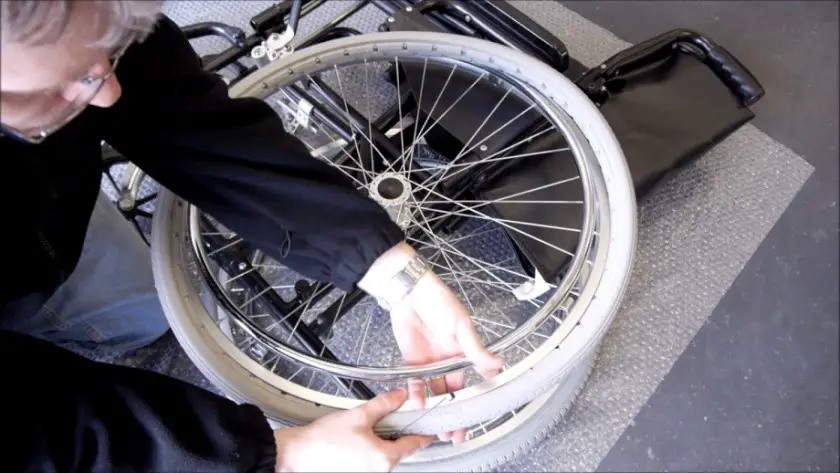Facet arthropathy is a form of musculoskeletal disorder that affects the spine.
It is a medical condition that’s common among people between the age bracket of 40 and 75 years and above.
Even though the Blue Book of the Social Security Administration (SSA) recognizes many musculoskeletal impairments as disabilities, is facet arthropathy one of them?
In other words, can facet arthropathy be called a disability that could make a person who suffers from it be entitled to social security benefits?
I’ll provide the right answers to these questions as you read on.
Table of Contents
- What’s Facet Arthropathy All About?
- Causes of Facet Arthropathy
- Symptoms of Facet Arthropathy
- Treatment for Facet Arthropathy
- How to Detect Facet Arthropathy
- Is Facet Arthropathy a Disability?
What’s Facet Arthropathy All About?
Facet arthropathy is commonly referred to as mechanical low back pain.
It’s a severe pain that affects the spine due to the deterioration of the facet joints that are between the spinal bones.
As you grow older, the facet joints (which are the joints that work with other parts of the spine to ensure the proper alignment of the vertebrae and limit the movement of the spine) begin to deteriorate.
This deterioration will eventually lead to facet arthropathy where the facet joint cartilage begins to break down, lose its functionality, and becomes thinner.
The result of this may result in swelling, inflammation, and stiffness due to the improper movement of the bones in the joints rubbing against each other.
Facet arthropathy could also put pressure on the spinal cord.
This might cause you severe pain in the whole of your back, especially your lower back area.
Related: Here’s How Much Money You Get for Mental Disability
Causes of Facet Arthropathy
- Old age: This is the primary cause of facet arthropathy. The spine and joints begin to wear out as you grow older. And you might start to experience the pains in your lower back if adequate care is not taken on time.
- Injury to the facet joints: This might be as a result of an accident that affects any of the facet joints.
- Friction between the facet joints: When the facet joints rub against each other, this leads to inflammation. And the adverse effect of this will cause you pain at the nerve ending of your spine.
- Injury to the spinal disc
- Cartilage splitting or hemorrhage around your facet joints could also be a cause
- Hereditary: If you have a family history of facet arthropathy, there are tendencies that you’d suffer from it as you grow older.
- Obesity: When a person is overweight, they have high chances of developing facet arthropathy.
- Poor posture: The inability to maintain a good posture might cause a strain in the facet joints or spine, which could also lead to facet arthropathy.
Symptoms of Facet Arthropathy

- Arthritic pain that might extend to the lower extremity
- Stiffness in any part of the back or neck
- Experiencing pains in the spine region
- Back or neck pain that worsens when you lean or bend backwards
- Extreme back pain when lifting objects, standing, or twisting sideways
- Experiencing relief from the pain after sitting, changing position, or leaning forward
- Excruciating pain after sleep
Treatment for Facet Arthropathy
Even though it has no cure, the pain can still be mitigated with the appropriate treatment.
Some of those treatments include the following.
Physiotherapy
Strengthening exercises and physical therapy are some of the ways you can reduce the pain.
If physiotherapy is done effectively, your spine will develop well, and it will prevent additional stress on your backbone.
Radiofrequency Ablation
This has to do with the process of shutting down your facet joint nerve with radiofrequency waves and stopping it from sending pain signals to your brain.
Surgery
You may opt for surgery to treat facet arthropathy when it involves cases of spinal stenosis, spinal instability, and nerve compression.
Related: Is Stuttering a Disability? Everything You Should Know
Epidural
This is a pain-relieving procedure where a steroid or anesthetic is injected into your spine with a needle to reduce the pain.
Medication
Pain-relieving drugs like Ibuprofen, NSAIDs, Aspirin, Naproxen, Toradol, Tylenol, or paracetamol are helpful medications that your doctor or pharmacist could prescribe for you to help reduce the pain.
Stem Cell Regeneration
It involves an experimental and non-invasive treatment of the damaged facet joints.
It is a process whereby an orthopedic specialist painstakingly injects stem cells into the facet joints with the use of CT imaging guidance.
The cells begin to repair the joints after responding to inflammatory signals from the arthritic joint.
How to Detect Facet Arthropathy
Your doctor or healthcare provider can easily detect it by checking your medical history or evaluating you physically.
Anesthetic injection or anti-inflammatory steroid injection can also be administered to your facet joints.
And if you’re 90% relieved of the pain after the injection, then it’s clear proof that you’re suffering from facet arthropathy.
However, to get an accurate diagnosis, you may be told to do a scan or test, which might be any of the following.
- X-ray
- Computed tomography scan or CT-Scan
- Magnetic resonance imaging
- Bone scan
Related: How to Prevent Disability Discrimination Anywhere
Is Facet Arthropathy a Disability?

Facet arthropathy could qualify as a disability based on the severity of the symptoms you experience.
This is especially true if it prevents you from living a normal life or earning a sustainable income.
And if the symptoms you experience are in line with the musculoskeletal conditions contained in the Blue Book of the Social Security Administration (SSA), you could qualify for social security disability benefits.
Unlike other spinal conditions like osteoarthritis, degenerative disc disease, spinal stenosis, compressed nerves, and herniated disc, facet arthropathy is not included on the list of musculoskeletal conditions as contained in the SSA’s Blue Book.
However, you can still claim disability benefits if you can prove that your symptoms meet the SSA’s standard of spinal conditions to qualify you as a person with a disability.
Alternatively, you can apply for a Residual Functional Capacity (RFC) assessment to measure your physical capabilities.
This is to enable you to prove that the facet arthropathy you’re suffering from has caused you a great degree of disability.




